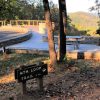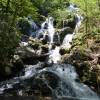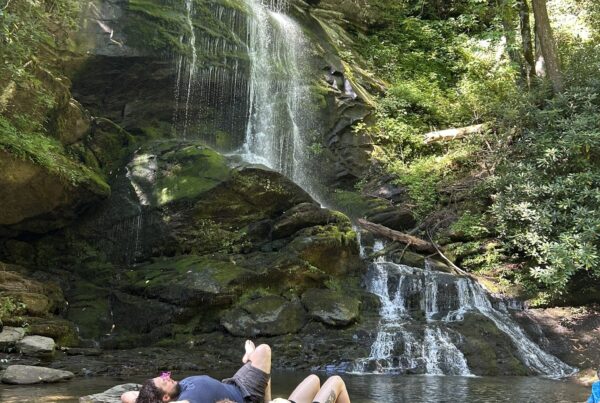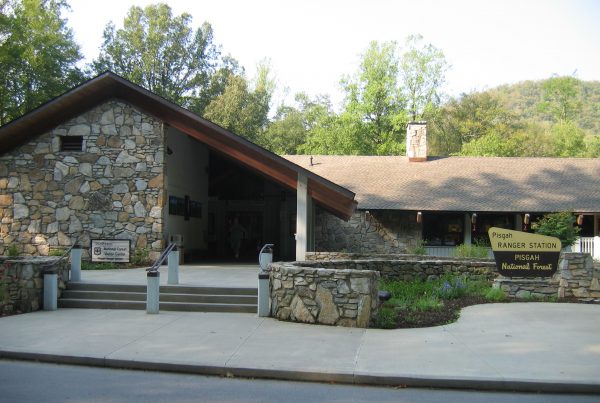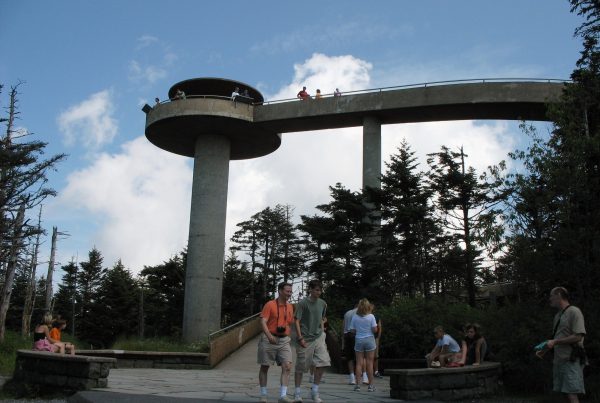Cape Hatteras National Seashore – Home – Parks & Forests – Camping – Hiking – Links – Adventures
Lighthouses at Cape Hatteras National Seashore
There are three historic lighthouses to visit on the Cape Hatteras National Seashore, two of which you can climb in season and each of which is still in use every night. Traveling from north to south, the Bodie Island Lighthouse, which is to the left off N.C. 12 South, is the first. It is followed by the Cape Hatteras Lighthouse and the Ocracoke Island Lighthouse.
- In case you missed it, see our primary Cape Hatteras National Seashore page.
Bodie Island Lighthouse
The Bodie light (pronounced like “body”) is the third to be built at the northern end of today’s national seashore, though the previous two were actually on Pea Island to the immediate south. The current lighthouse was first illuminated on October 1, 1872. The keepers’ quarters, a duplex that stands in front of the lighthouse, was completed soon thereafter.
The former keepers’ quarters now houses ticket sales for climbing the lighthouse and for driving off-road vehicles on the seashore. There are a few small displays and a tiny bookstore on the lower floor, as well, and offices above.
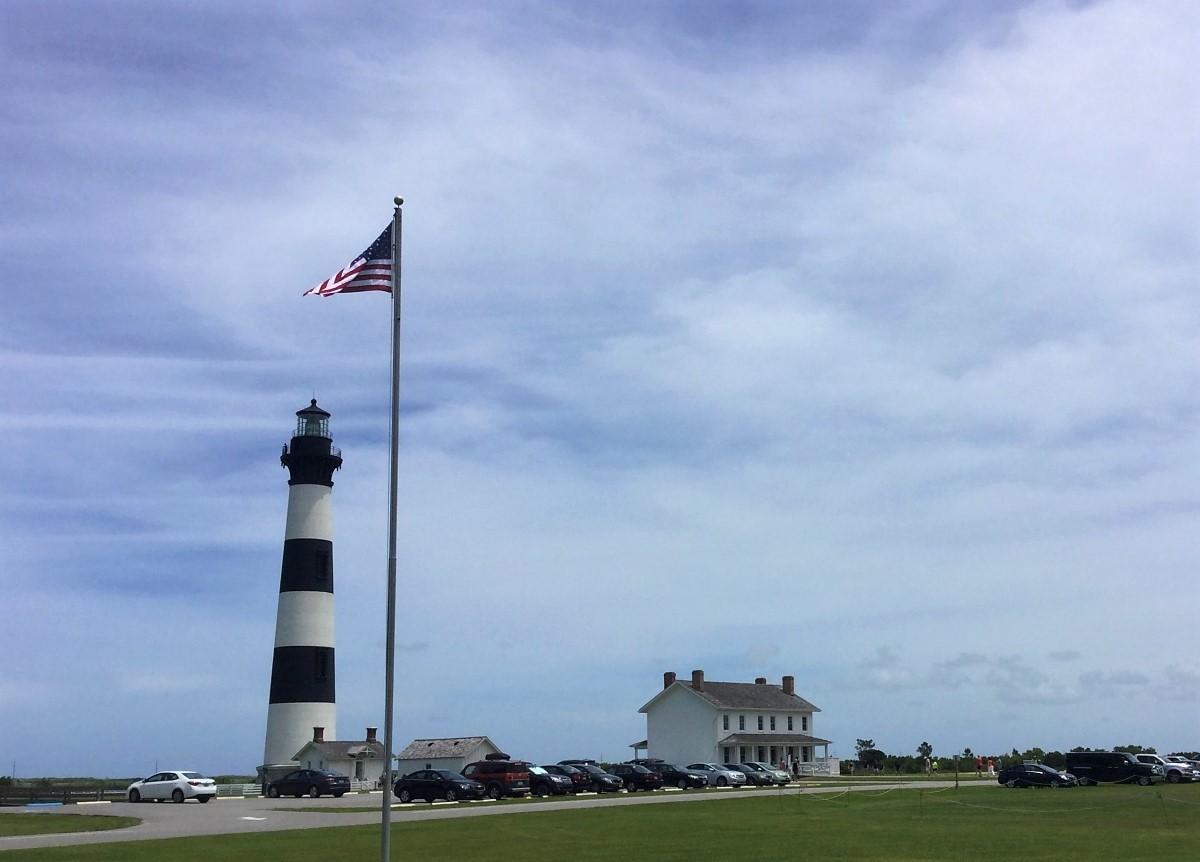
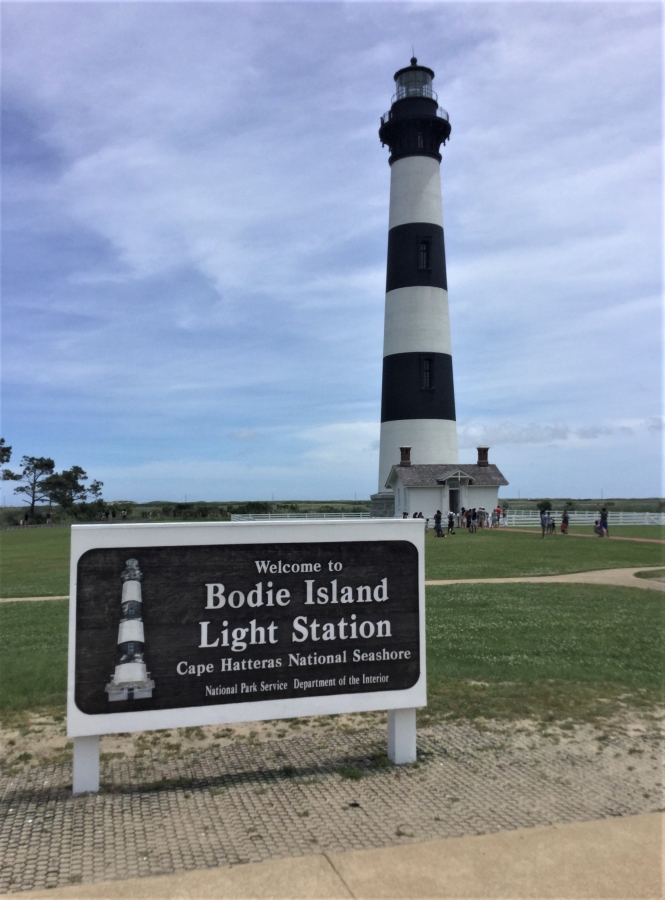
It costs adults $10 to climb Bodie lighthouse; $5 for kids, seniors and the disabled. Climbers must be at least 42 inches tall and weigh less than 260 pounds. A ranger instructs climbers before they enter, and another is at the top.
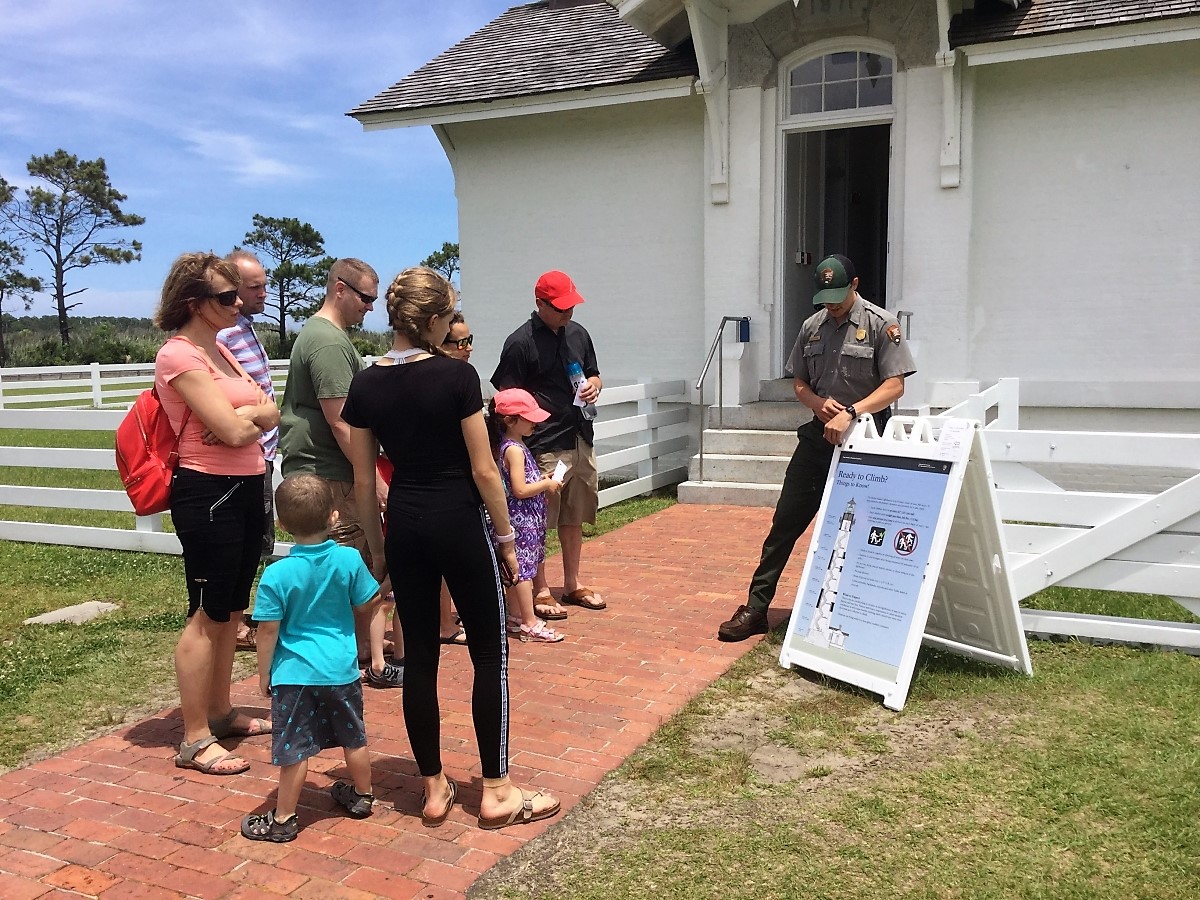
The Bodie light is 156 feet tall and features a 214-step floating staircase, meaning it is not attached to the walls of the lighthouse.
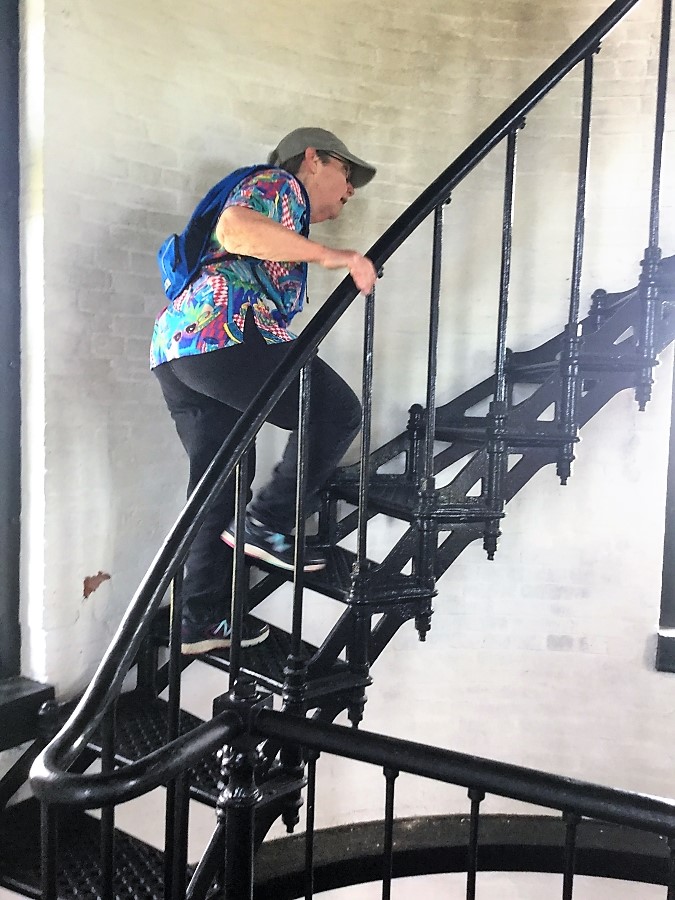
A spiral staircase, of course …
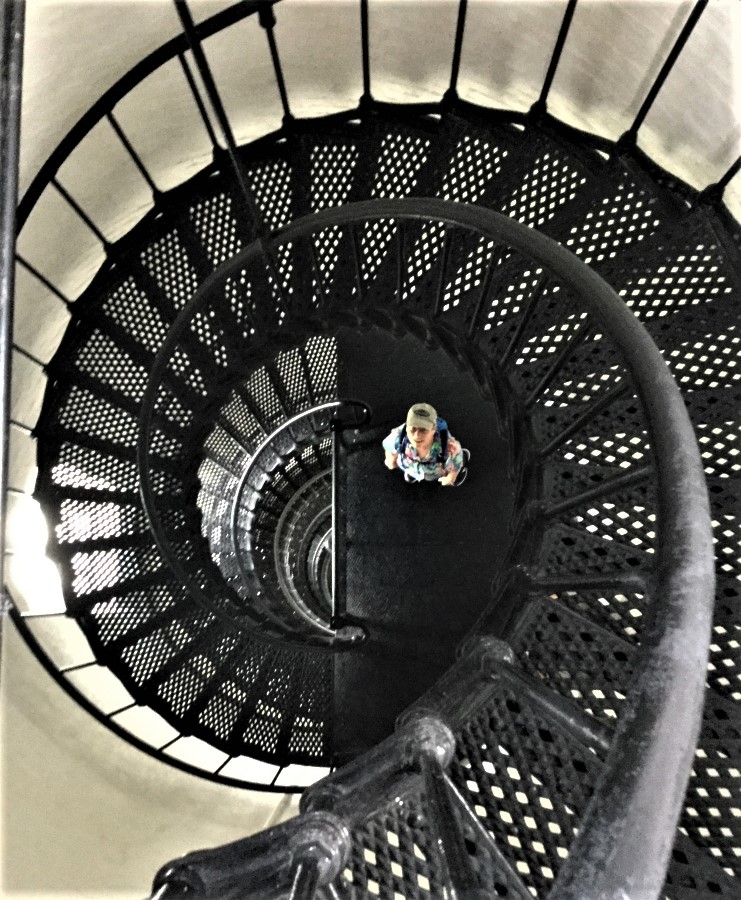
In addition to the large, grassy lawn, another feature of the Bodie day use area is a boardwalk to an overlook on a pond.
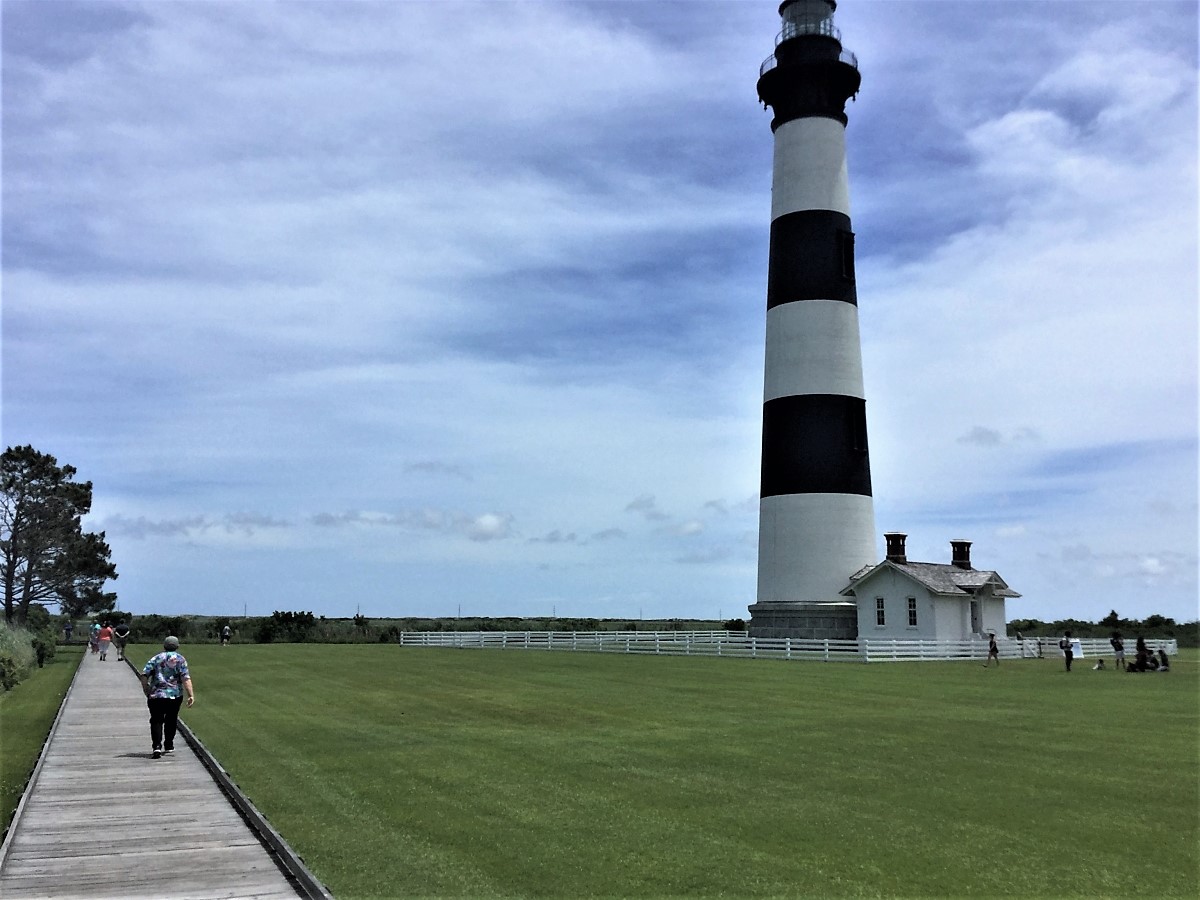
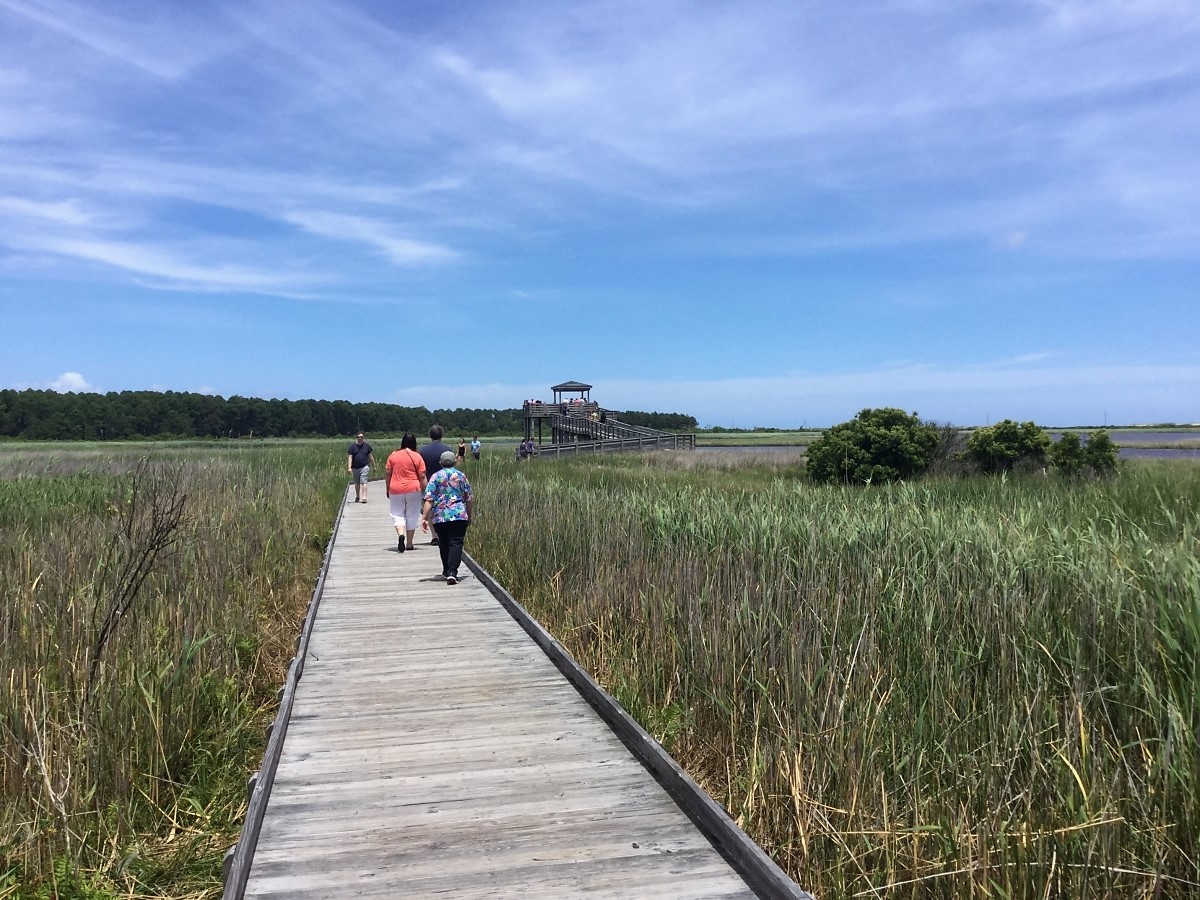
Here’s the boardwalk, overlook, pond and Atlantic Ocean beyond from atop the lighthouse …

If it’s too windy or there is lightning, climbers are not allowed onto the lighthouse balcony. It was too windy for us to go on the balcony, though we were allowed to look out the doorway. But by the time we were on the ground, people were on the balcony. Conditions change quickly; if walking on the balcony is important to you, ask when they’ll measure conditions again.
As consolation, we were allowed to climb a step or two higher to see the lighthouse’s Fresnel lens. Prisms in a Fresnel lens reflect and refract (bend) light and magnify it, thereby taking rays of light that would normally scatter in all directions and focusing them into a single beam that can be seen more than 20 miles away, the Parks Service says.
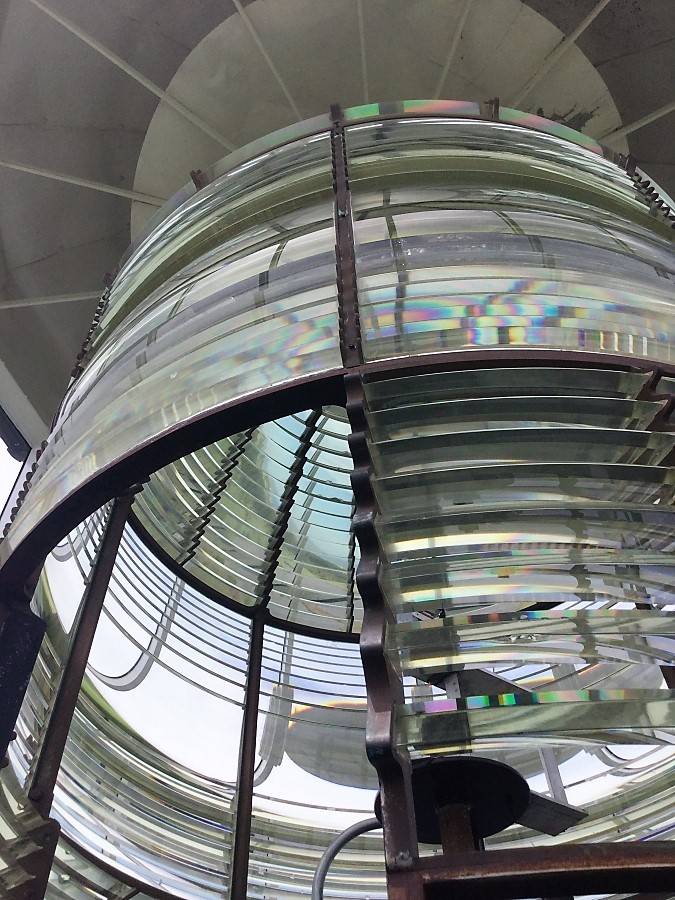
Cape Hatteras Lighthouse
The Cape Hatteras Lighthouse is iconic as a tourist attraction and as the protector of ships entering the treacherous Diamond Shoals, aka the Graveyard of the Atlantic. It is the tallest brick lighthouse in the United States, measuring 198.49 feet from the bottom of the foundation to the top of the pinnacle of the tower.
It is in Buxton, at the southern end of Hatteras Island. It is the third lighthouse at Cape Hatteras, and was first lit on December 1, 1870.

In 1999, the National Park Service moved the Cape Hatteras Lighthouse 2,900 feet away from the eroding beach, and it now stands 1,500 feet from the seashore. The double keepers’ quarters, the principal keeper’s quarters, the dwelling cisterns, and the oil house were all relocated with the lighthouse.
The Park Service also built a large bookstore / gift store, bathrooms and a pavilion at the new site.
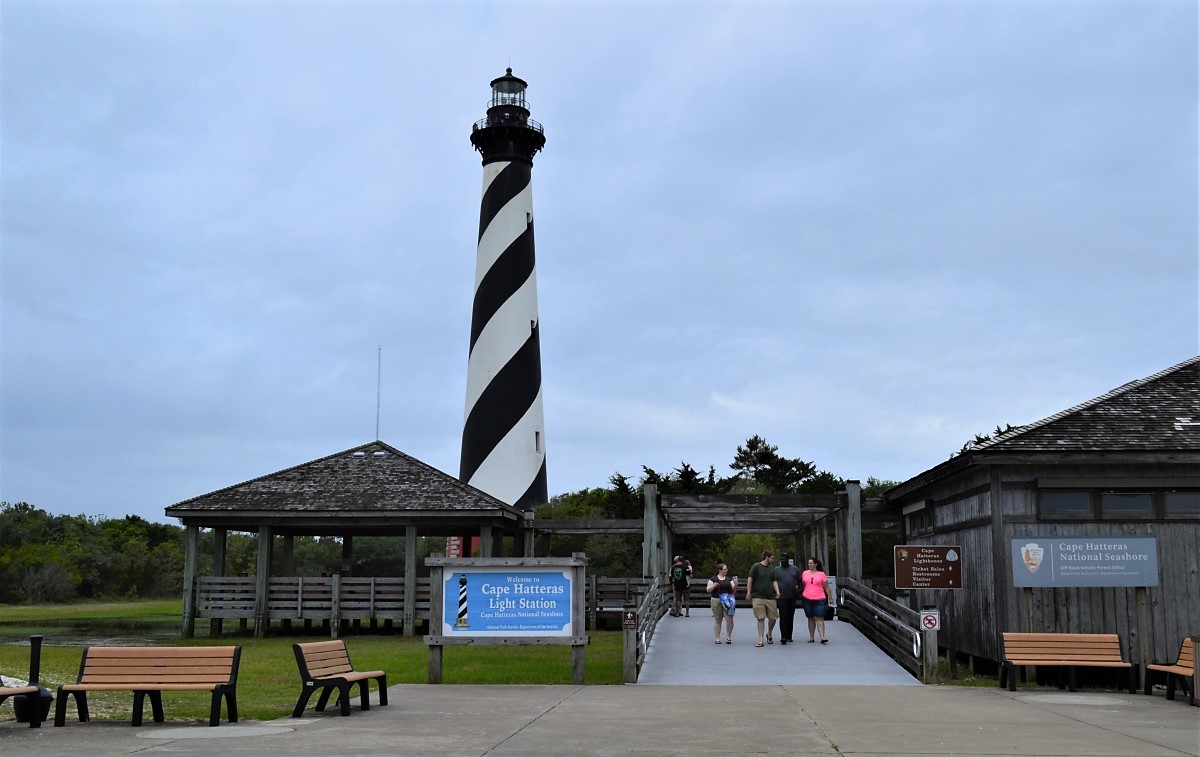
The Cape Hatteras Lighthouse has 257 steps from the ground to the balcony, equal to climbing a 12-story building. It costs $8 for adults to climb; $4 for children, seniors and the disabled.

From the balcony, you can see beach houses in Buxton …

Wetlands and the beach at Cape Point … Notice the curving sandbar at the tip of Cape Hatteras in the distance.

The light keepers’ quarters right below, now used as a visitors center / museum (left) and offices at right …
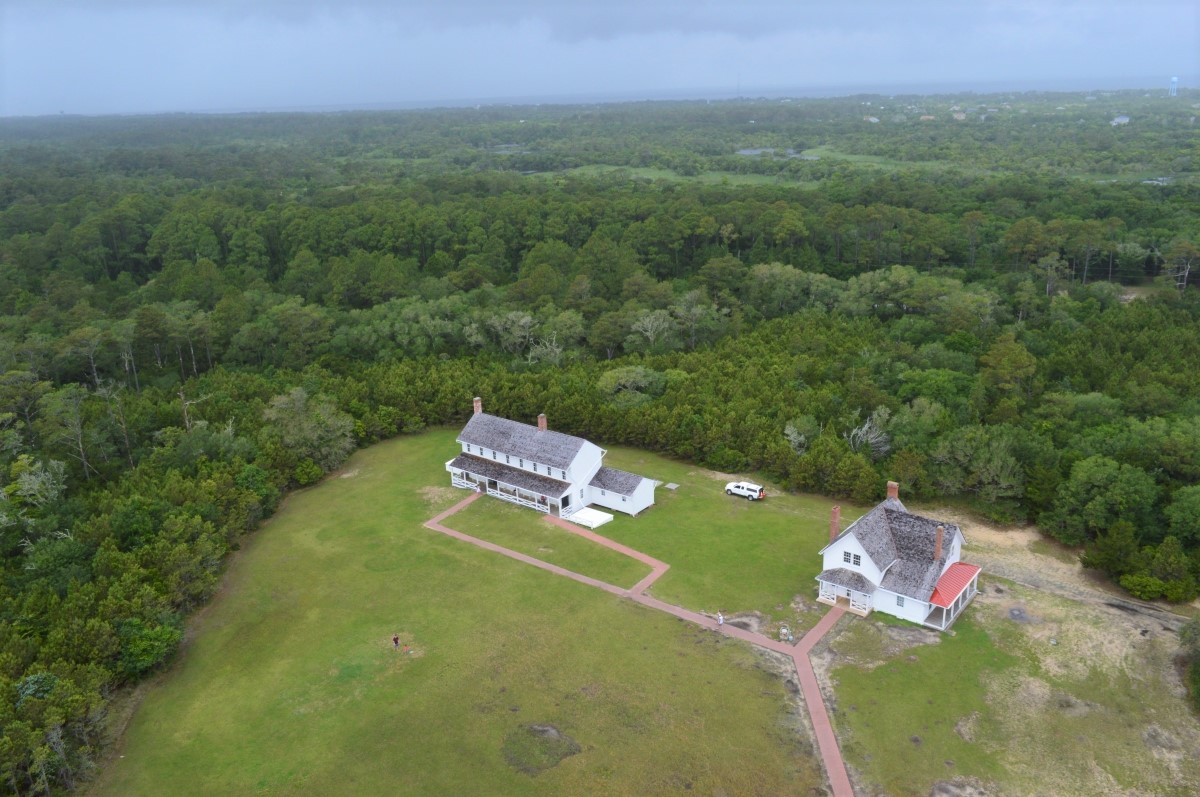
The new gift shop, pavilion and parking … The path to the right past the pavilion, through the parking lot and between the trees toward the beach is the route the lighthouse traveled when it was moved in 1999.
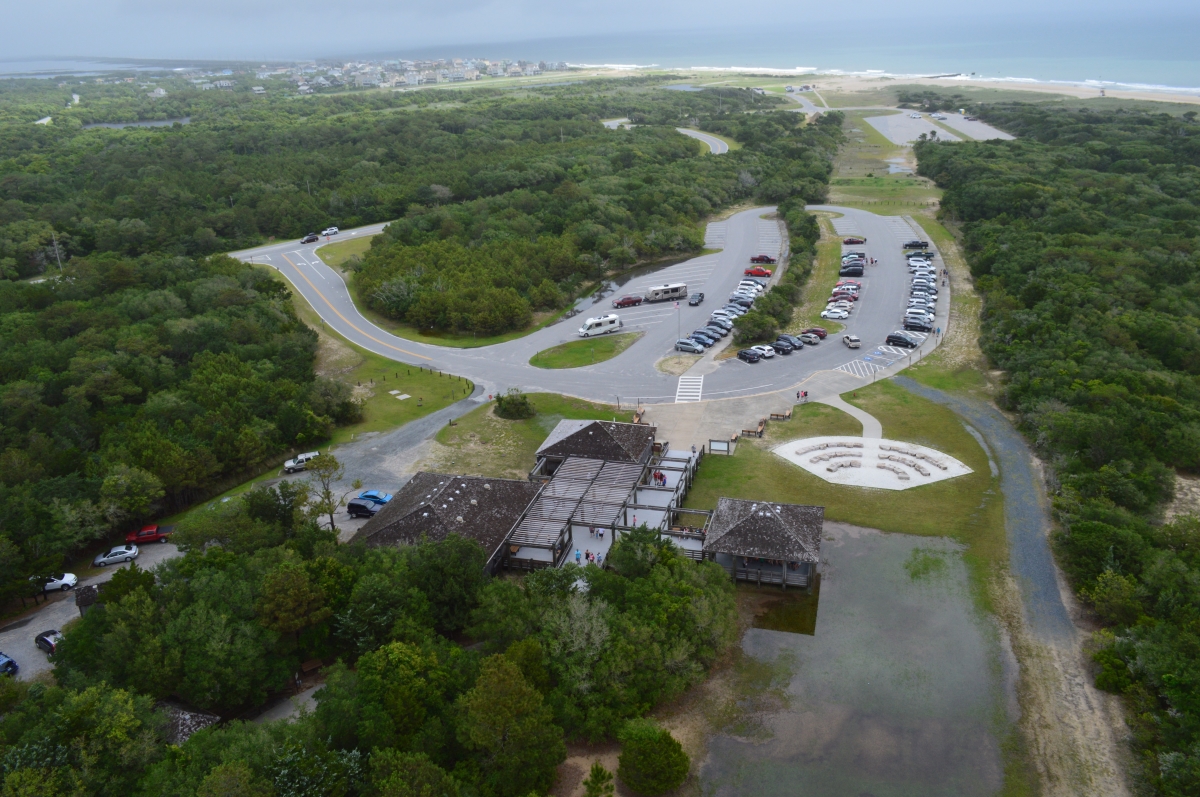
At the museum, in addition to numerous historical exhibits, a video relates the history of the lighthouse and what you’ll be looking at from the balcony if you climb it.

Ocracoke Island Lighthouse
The lighthouse on Ocracoke Island is a subtle roadside attraction off a side road near the island’s Ocracoke Village area. The populated area of the island is about a mile long, so many people walk or ride bikes or golf carts to the site. Reaching the island requires a state ferry (to ports at either end of the island), private boat or plane.
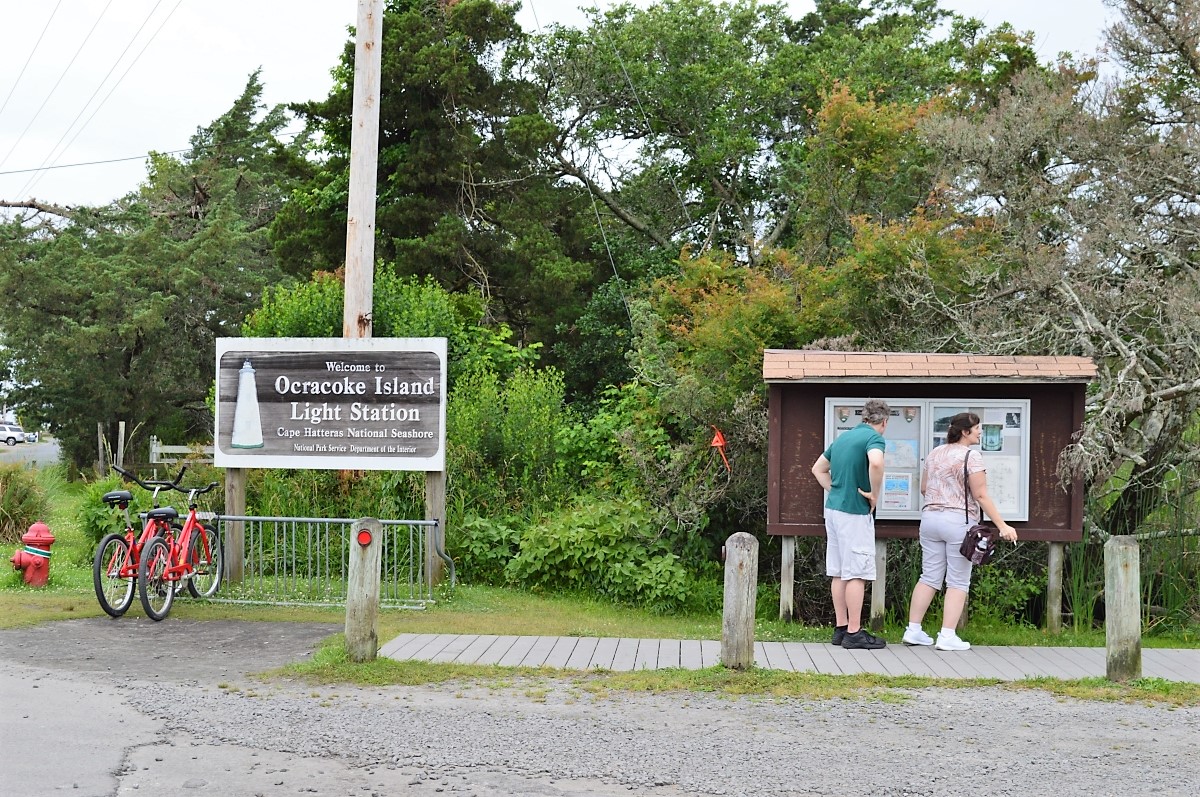
The Ocracoke lighthouse, the second built at the island’s southern end, is about 75 feet tall. Its diameter narrows from 25 feet at the base to 12 feet at its peak. The walls are solid brick and 5 feet thick at the bottom, tapering to 2 feet at the top.
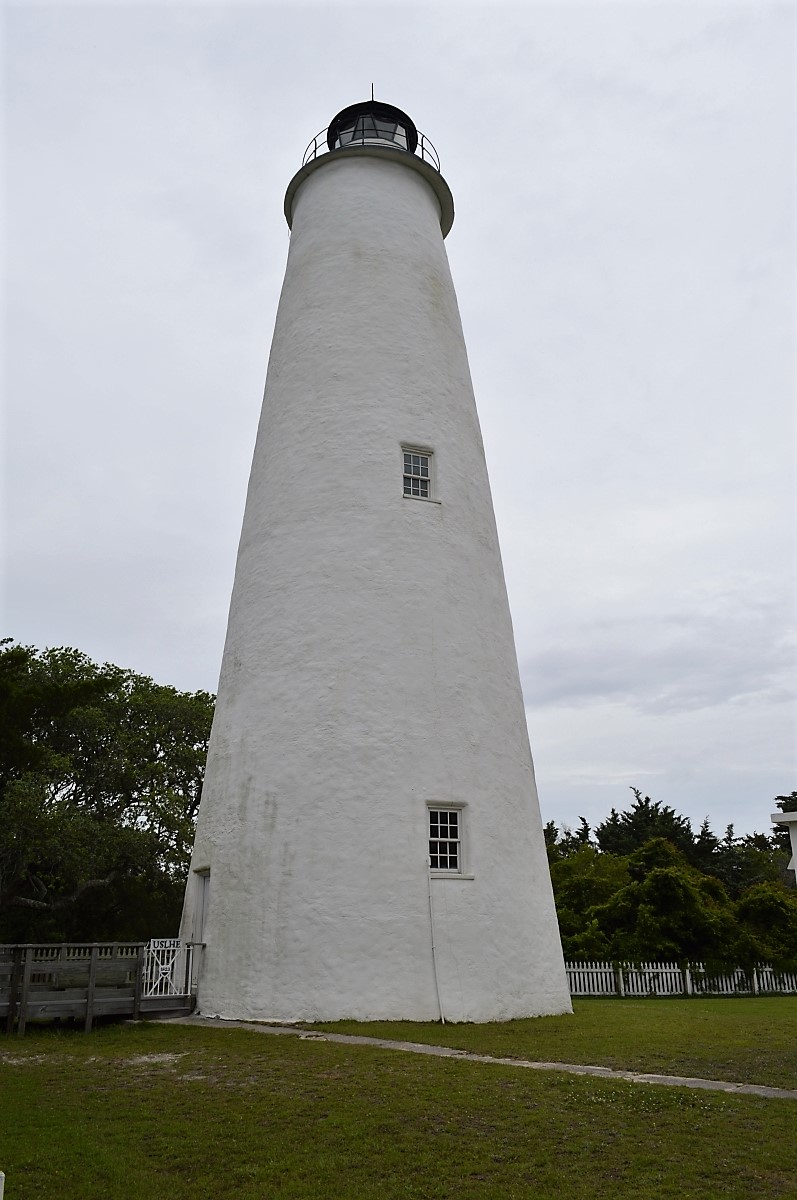
The sight is small but pretty, with a boardwalk that goes to the base of the light and provides a couple of informational signs along the way, and the red-roofed keepers’ house, now a private residence.
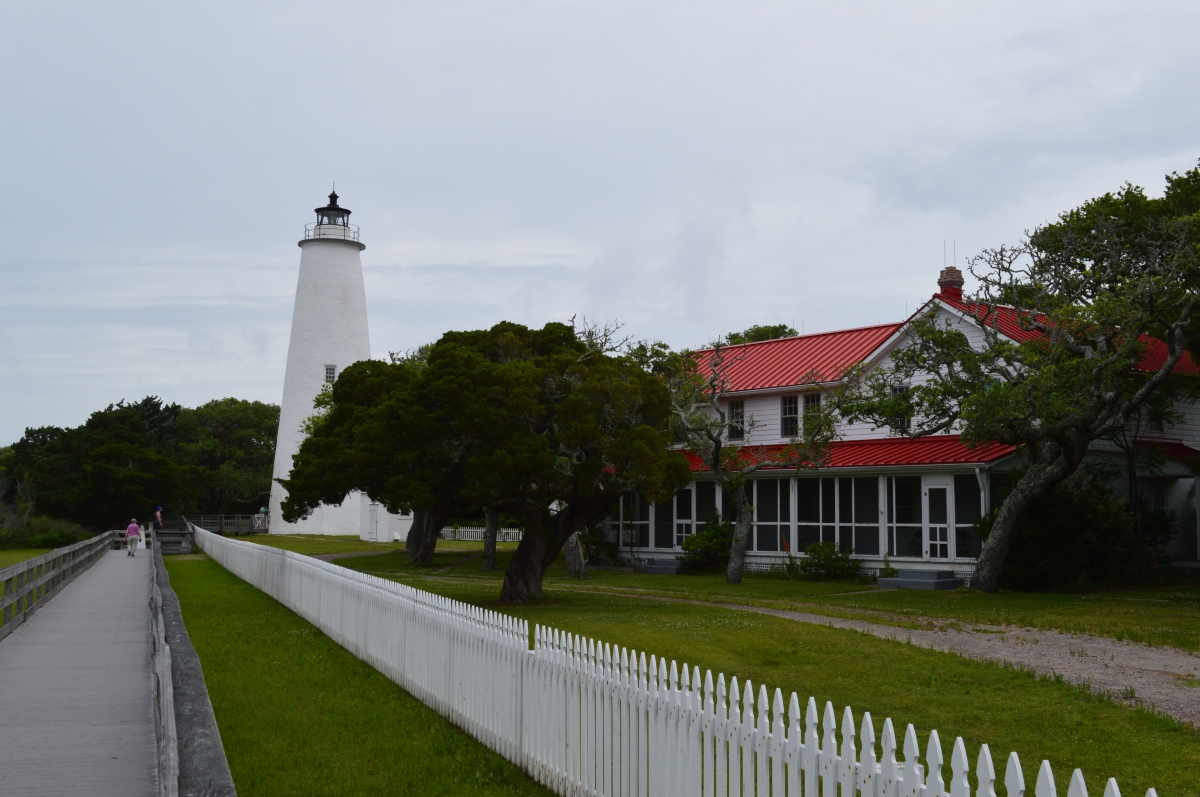
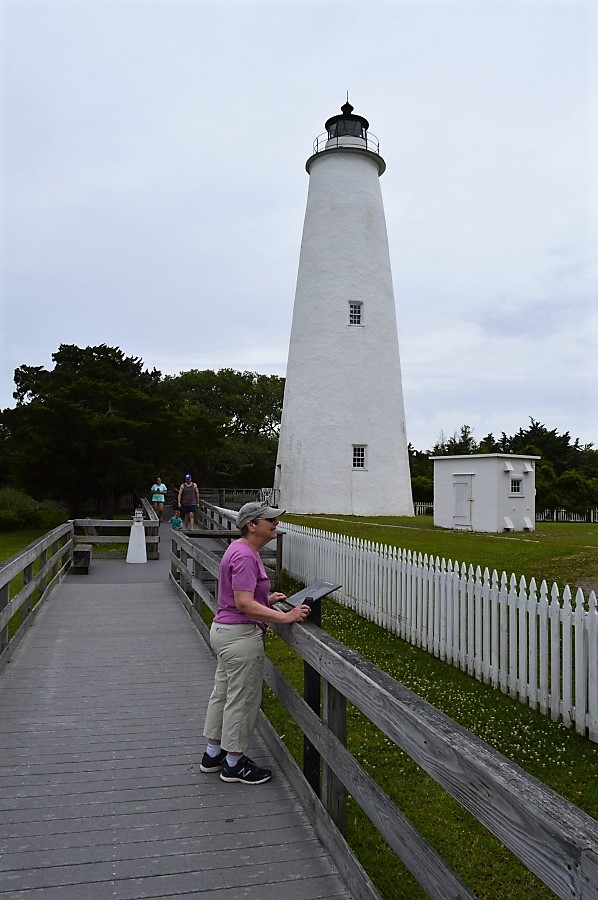
The Ocracoke Lighthouse is not open to the public. It is free to visit.
The Ocracoke Light seen from across Silver Lake in Ocracoke Village on an early summer evening …
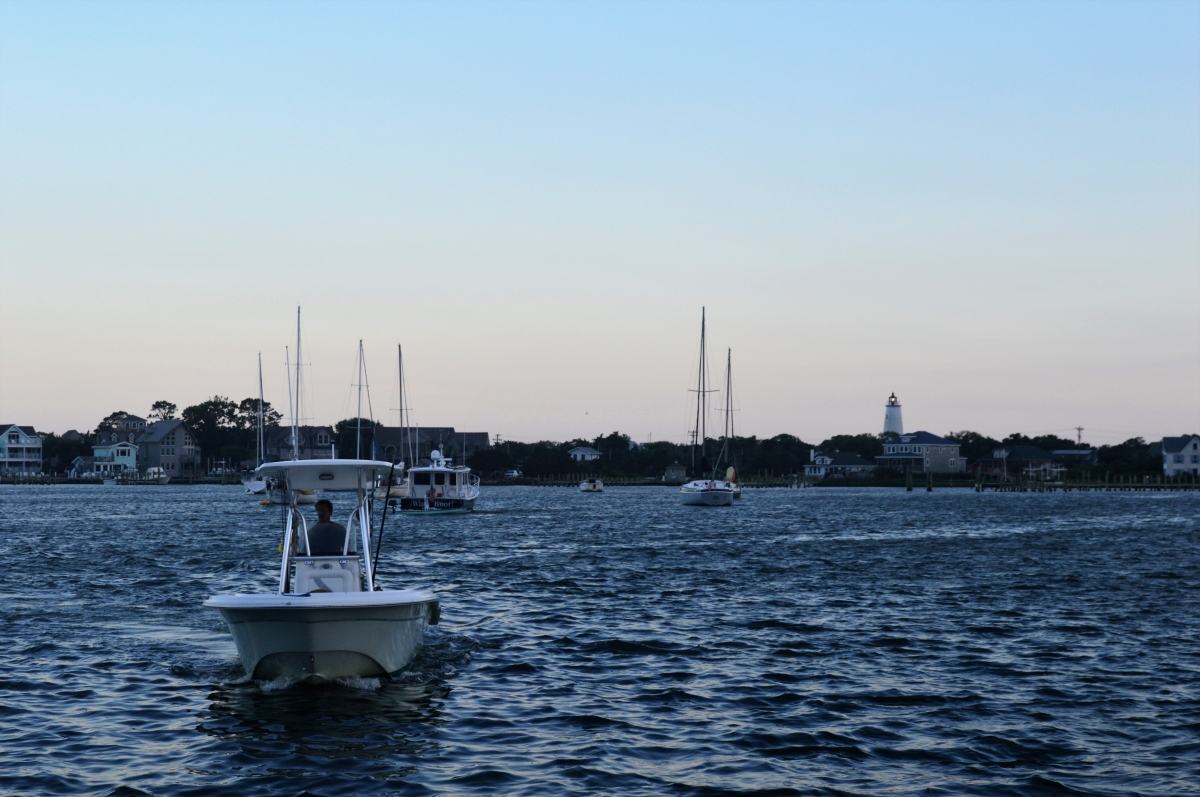
Return to National Parks
Visit Our Sister Site
Carolina Music Festivals, a calendar and guide to music festivals in North Carolina.





